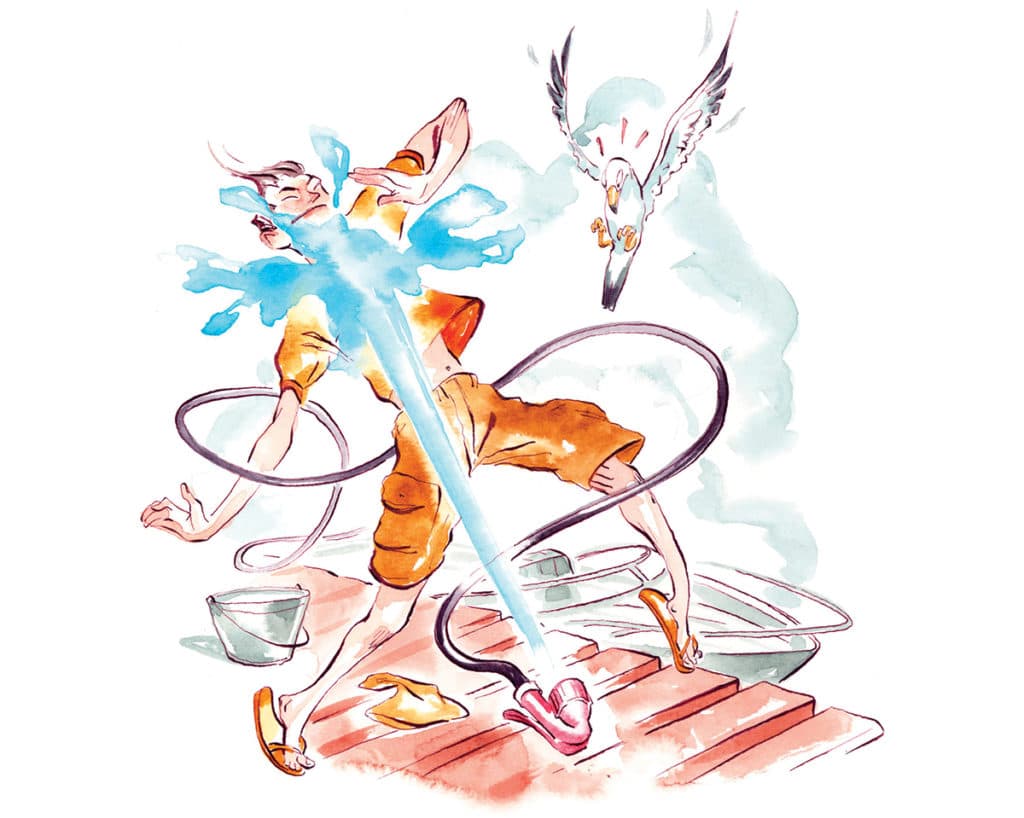
Ever wonder why the toilet bowl in your boat is so damn low, or why when you drop the wash-down hose it always lands on the nozzle’s handle and blasts you? Me neither. At least, not while my brain is being kept active during the season as there are too many other things to be thinking about.
But I’m writing this in a month when there is more night than day, and the boat has been hauled out. Basically, from now until spring my mind is on hold. Since my wife won’t let me migrate south, I go into a kind of hibernation. But every once and awhile I rouse myself, scratch, make an impolite noise, start thinking about those boating imponderables I’ve ignored during the season, and do a little research. So here, from the hard work of other more industrious minds, are answers to questions that you never asked — but have always bothered me.
Let’s start with my obsession with yellow and green running and navigation lights. Back in 1889 there was an international conference about buoy colors, and it was decided that they should be red and black. Since there were no lights on buoys back then, everything was fine. Next, they decreed everyone should have running lights. They already liked red and since you can’t have black lights, they chose green — red’s complement. Too bad, as red was a poor choice to stick with. We are five times less sensitive to it than green and yellow; most of us can pick out a lighted green buoy long before a red one. The only good thing about red is that because it has such a different wavelength than green there’s little chance of confusion.
Also, I’ve never understood why in this hemisphere and a few other odd spots it’s “red, right, returning,” while everywhere else it’s green. I’ve been told that it goes back to when Britannia ruled (most of) the waves, and the young United States stole the rest. Note from the Queen: “We drive on the left and have backward markers. If you don’t like it, you can bugger off.”
Ever notice that the weather service gets the temperature wrong more often in the cold months than in the warm ones? Of course you haven’t. But I have, and it’s true. Because weather systems (fronts, lows, highs and stuff like that) are stronger and move faster in the winter, we get greater and more sudden temperature variations.
Rain, on the other hand, is harder to predict when it’s warm. Most rain in the spring and summer comes from randomly occurring localized storms or showers that don’t last long. In winter, precipitation comes from large weather systems that take hours or days to pass, making them much easier to predict.
I’ve gone boating pretty much everywhere and the altitude readings on my GPS show that the height of the ocean’s surface — ignoring waves and tides — isn’t even. It varies by about 500 feet. So there’s no such thing as “sea level,” which has always confused me. You fill a bathtub with water and it’s the same height at both ends. So why is it not the case with Earth’s big tub? It’s because there are regional differences in the strength of gravity due to the varying density of the planet’s crust. The lowest “sea unlevel” is off India; the highest is off New Guinea.
When it comes to my issues with low toilets, the answer has two parts: The base has to be low to keep it from ripping out when sat on in rough weather. Also, since bowls get wider as they get taller, and there is little room in a boat, they are kept low to save space.
I still have no answer on the hose-spray thing. But I’m sure when I see you outside the inlet this spring, I’ll be dripping wet from a dropped wash-down hose.









